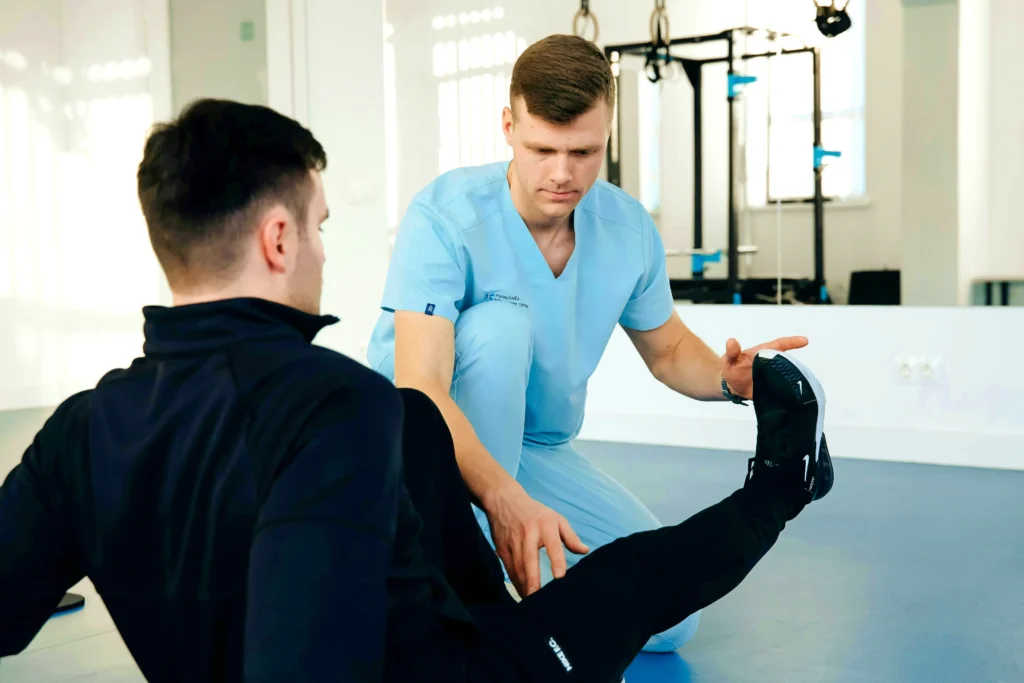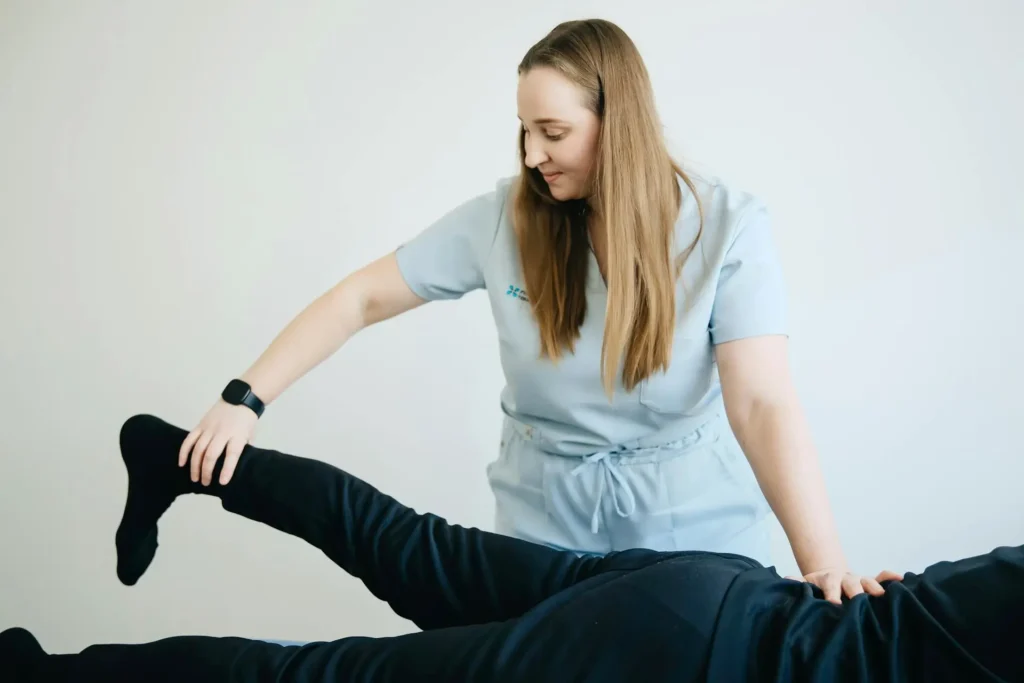Did you just finish a fantastic run? But hang on! What’s that pain at the back of your ankle? If you’re experiencing Achilles pain after running, you’re not alone. It’s a common issue, but the good news is that with some care and the right strategies, you can bounce back stronger and keep smashing those miles.
Your Achilles tendon works hard with every step you take, but if you push it too much or wear the wrong shoes, it can get sore. The good news is that with some tips and the right care, you can ease the pain and keep it from coming back.
Alright, let’s help you get back to running like a pro!
Table of Contents
What Is Achilles Tendon, and Why Does It Hurt After Running?
Think of your Achilles tendon as a spring that helps your foot move; it connects your calf to your heel and takes the pressure with every step. But pushing it too hard can cause soreness or stiffness, just like even superheroes have their limits.
Why Do Runners Often Get Achilles Pain?
Running puts your Achilles tendon to the test with all the impact it takes. Here’s what could make it go too far:
Skipping Warm-Ups:
Jumping straight into running without warming up isn’t great for your Achilles!
Too Many Hills:
Hills are great for strength but can overload your tendon if you overdo it.
Worn-Out Trainers:
Old shoes may not provide enough support and can affect your running style.
Spot the Early Signs of Achilles Trouble
Catch it early, and you’ll avoid a more serious injury. Here’s what to watch out for:
- Morning stiffness: Soreness or tightness first thing in the morning.
- Tenderness: Pain when you press the back of your ankle.
- Swelling: Puffiness or a noticeable lump.
- Crackling sensation: A crunchy feeling when you move your ankle.
What Causes Achilles Pain After Running?
- Overtraining: Going from short jogging to running higher mileage such as for a marathon all at once can stress your tendons, so take your time and pay attention to how your body feels!
- Weak Calf Muscles: If your calf muscles aren’t strong, your Achilles tendon will take the hit.
- Improper Footwear: Old or unsupportive trainers don’t protect your feet properly, leaving your tendons at risk.
- Hill Running and Sprints: These tough workouts are great but should be introduced gradually.
- Flat Feet or Overpronation: If your feet roll inward too much, it can twist your Achilles awkwardly. Orthotic insoles can help.
How to Treat Achilles Pain After Running?
Achilles pain doesn’t mean the end of your running journey. Here’s how to treat it: (RICE Method)
RICE Method
- Rest: Take a break to let your tendon heal.
- Ice: Apply for 15–20 minutes to ease swelling.
- Compression: Use a snug wrap for support.
- Elevation: Keep your foot raised to reduce puffiness.
Heel Raise Exercise
- Stand on a step with your heels hanging off the edge.
- Raise your heels, then lower them slowly.
- Start with both feet; progress to single-leg drops.
Calf Stretch
Gently stretch your calves to relieve tension:
- Place your hands on a wall and step one foot back.
- Keep your back leg straight and press your heel into the floor.
Massage and Foam Rolling
Massage your calves to improve blood flow and reduce tightness. A foam roller can also work wonders.

Fuel Your Recovery with the Right Foods
What you eat matters more than you think. Include these in your diet:
Collagen-Rich Foods:
Foods like bone broth, gelatin, and chicken skin can heal your tendons faster because they’re packed with collagen.
Omega-3 Fatty Acids:
Salmon, walnuts, or chia seeds reduce inflammation.
When to Seek Professional Help?
If your pain doesn’t improve after two weeks or gets worse, it’s a good idea to see a physiotherapist who can check your running style, suggest some exercises, or even recommend treatments like shockwave therapy. In serious cases, they might suggest surgery.

How to Prevent Achilles Pain in the Future?
Build Strength
- Calf Raises: Strengthen the tendon.
- Single-Leg Balances: Boost stability.
- Glute Bridges: Support proper running form.
Upgrade Your Gear
- Replace trainers every 300–500 miles.
- Use orthotic insoles if you have flat feet or overpronation.
Listen to Your Body
Don’t push through pain—it’s not worth it.
Can Running Form Cause Achilles Pain?
Yes, it can! If you’re landing too far in front when you run, it can strain your tendons. Try taking shorter steps and picking up your pace. A gait analysis could also give you some great personalised advice!
Frequently Asked Questions (FAQs) About Achilles Pain After Running!
Can I keep running with Achilles Pain?
Running while feeling some pain can be risky, so it’s best to switch to low-impact activities like cycling or swimming until you feel better. Once you’re ready, try shorter jogging and always get advice from your coach, physiotherapist or doctor, before fully getting back to running.
How long does it take to recover from Achilles pain?
With the right care and treatment, recovery from Achilles pain can take anywhere from 6 to 12 weeks for milder issues. But if it’s more serious, like tendinopathy or a tear, it could take several months or more to heal.
Should I stretch or strengthen my Achilles?
Do both. Stretching eases tension, and strengthening makes it stronger!
How can I tell if my Achilles pain is serious?
If your Achilles pain is sharp, doesn’t get better with rest, or comes with swelling, redness, or trouble walking, you should see a doctor or a physiotherapist. Because it could be something more serious like a tear.
Are certain types of running shoes better for Achilles pain?
Some running shoes with good heel support and cushioning can help ease Achilles pain. Especially, if you have flat feet or overpronation, stability shoes or orthotic insoles correct your stride and reduce strain on the tendon.
What exercises should I avoid if I have Achilles pain?
If you have Achilles pain, skip exercises like uphill running, sprints, and high-impact jumping. Stick to easier exercises and activities like hill raises and calf stretches. That helps your tendon to heal without a lot of stress.
Final Takeaway!
Achilles pain is frustrating, but it’s not the end of your running journey. With the right care and prevention, you can get back to running pain-free. Keep in mind that making little changes now can help you avoid bigger issues later. So get moving, take care of yourself, and have fun with the journey ahead!
If you want to learn more about other running injuries such as Ankle sprains, check out my post ‘How To Heal A Sprained Ankle Faster? Proven Tips!‘
Happy running!




